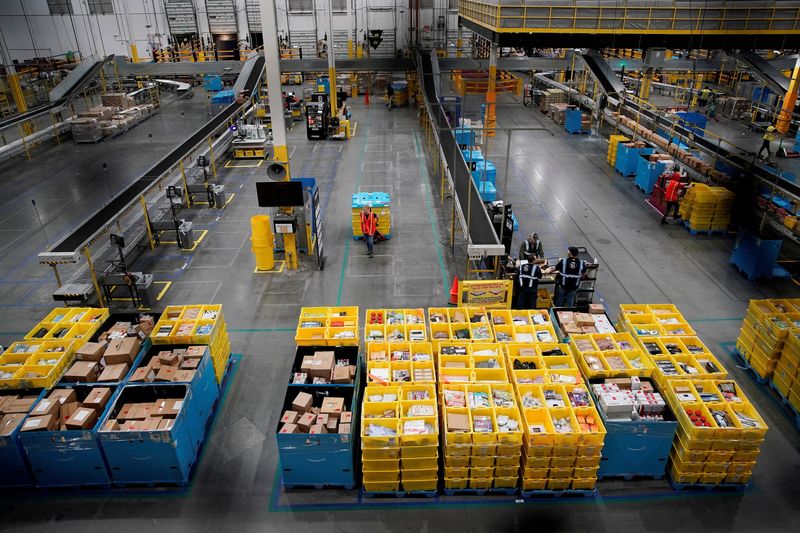By Howard Schneider
WASHINGTON(Reuters) - Prices for online goods in the United States fell at a nearly 2 percent annual pace in November, the fastest decline since the onset of the COVID-19 pandemic and a sign that one important aspect of overall inflation continues to slow.
The month-to-month decline in the Adobe (NASDAQ:ADBE) Digital Price Index, a measure of online shopping designed to mirror the basket of goods included in the government's Consumer Price Index, was an even faster 3.2%.
The drop was broad as well, with prices falling on a monthly basis in 15 of 18 categories of goods. Groceries were a notable exception, though the pace of increase slowed from prior months.
Aggressive discounting during the start of the Christmas holiday shopping season drove the decline, but prices for "non-promotional" items like personal care products also declined.
"While the November drop in online prices was driven by major discounting on days including Cyber Monday and Black
Friday, we also see signs of overall e-commerce inflation cooling," Patrick Brown, a vice president with the software and analytics firm, said in a statement.
U.S. shoppers spent $35.27 billion online overall during Cyber Week, the period from Thanksgiving through Cyber Monday. That's a ho-hum 4% gain over last year at a time when U.S. inflation is running more than 7%.
The Adobe index, using methods developed in part by incoming Chicago Federal Reserve President Austan Goolsbee, hinted at the coming inflation shock when it began rising in mid-2020. Until that point online prices for years had been a drag on overall inflation.
The latest turn lower may be affirming what Fed officials hope will be a new trend towards disinflation as prices for goods either stop rising or even fall.
"If current trends continue, goods prices should begin to exert downward pressure on overall inflation in coming months," Fed Chair Jerome Powell said last week.

That alone won't solve the Fed's inflation problem. As goods inflation has begun to slow prices for services have accelerated.
The Fed will receive new inflation data next week when the Consumer Price Index for November is released on Dec. 13, the day they start their next policy meeting. Fed officials are expected to scale back the pace of rate increases to half a point at that meeting after four consecutive three quarter point rate hikes.